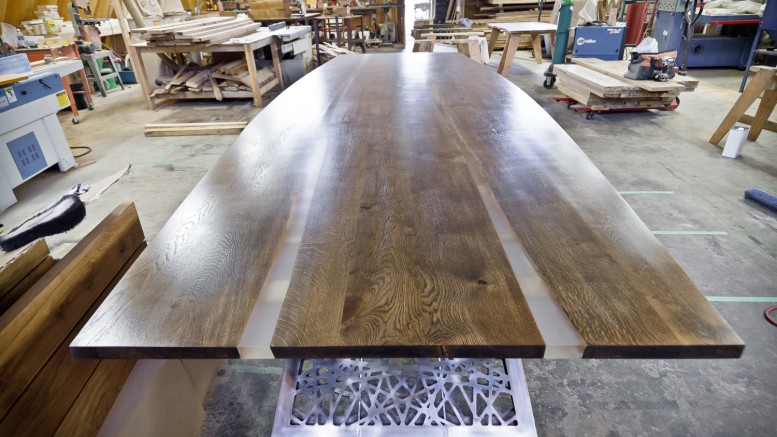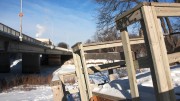The brainchild of Jason Neufeld, Wood Anchor is a wood reclamation company established in 2005.
Neufeld, referred to as “el capitano” of Team Wood Anchor, started the company with the goal of putting recycled wood to good use.
Over time, the company began designing and producing custom art pieces that are well-suited for both private and public settings.
“The goal was just to use recycled wood […] in a more production mindset such as flooring,” Neufeld told the Manitoban.
“As time went on, Wood Anchor focused more on custom pieces and public art pieces.”
Located in south Winnipeg, the Wood Anchor woodshop is an atelier for the handcrafting of original furniture, furnishings, and wood art. The wood pieces created can be used for both interior and outdoor purposes.
This studio is unique for one reason in particular: the kind of recycled wood used.
“In our region, we are the only ones using urban elm […] we have pushed the design of how we use it,” said Neufeld.
Urban elm is a tree species that used to be common in several developing urban communities. In the past few decades, a fungal affliction called Dutch elm disease has been found to affect the barks of these trees.
Many North American municipalities have developed Dutch elm disease programs tasked with removing affected urban elms and landfilling or burning the trees. As a result, millions of trees have been burnt.
Winnipeg is home to the largest remaining urban elm forest in North America. Each year, thousands of Winnipeg urban elms are removed and landfilled to control the spread of Dutch elm disease.
“I was dropping something off at the landfill […] and I saw this monstrous pile of elms that wasn’t being used, and I thought it would be nice to be able to […] use some of it,” said Neufeld.
Neufeld reached an agreement with the city of Winnipeg to collect affected urban elms and make the most of them. This way, instead of being chopped down, the affected trees can be used to design original works of art.
The handcrafted works of Wood Anchor can be seen at a number of popular sites in the city. These include the Winnipeg Airport ARA, the fire patio at the Qualico Family Centre, the signage at St. Amant Spirit Cottage, and the Living Prairie Museum & Park renovations, among others.
Recently, the company has been contracted to work on the Forks main building renovations.
“We are doing all the furniture for the Forks,” Neufeld said.
“Their architect approached us and […] we co-designed these pieces together. The Forks approved everything and now we are in the process of finishing.”
In the past few years, Wood Anchor has collaborated with the University of Manitoba’s faculty of architecture by facilitating tours and lectures for students.
“We have a number of classes every year in the faculty of architecture that come here for tours,” said Neufeld.
“The benefit of having students here is that we can educate them about wood and how we build and […] look at each piece of wood differently.”
Other than the kind of recycled wood used, Neufeld believes the Wood Anchor brand has benefited from their contemporary style of design.
His Wood Anchor team of six consists of woodcraft and design experts that ensure their products are well-detailed and well-suited for their purposes.
“Our role is to challenge what the norm is,” said Neufeld.
“The benefit for us is we are heavily involved in the design community, but also we are not part of any [architectural] memberships or organizations […] so we can kind of push things from the outside.”
The recycling of Winnipeg’s wood is important to the minds of Wood Anchor. Neufeld hopes the city can benefit from the company on a larger scale in the long run.
Visit www.woodanchor.com to see Wood Anchor’s portfolio and read more about their services.





